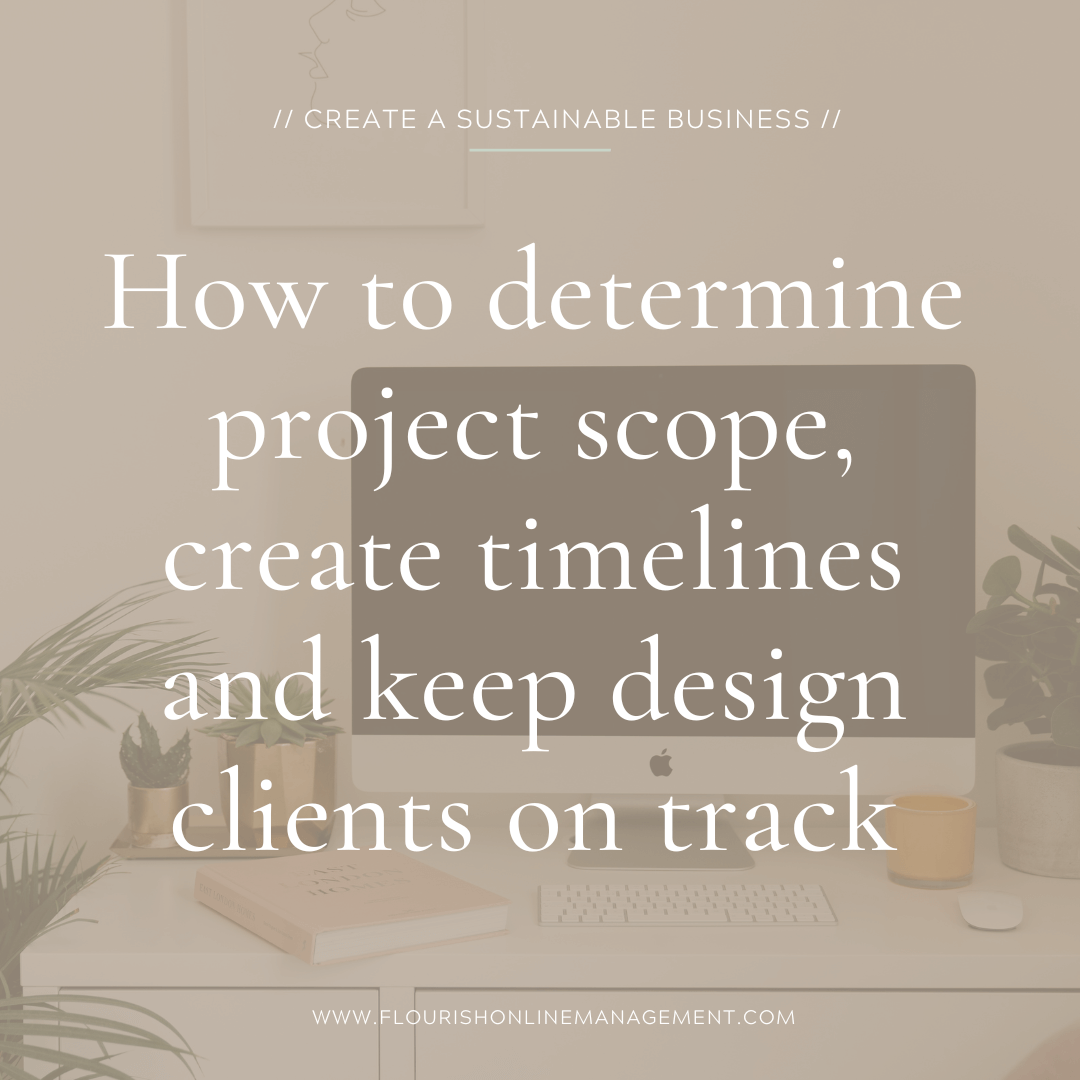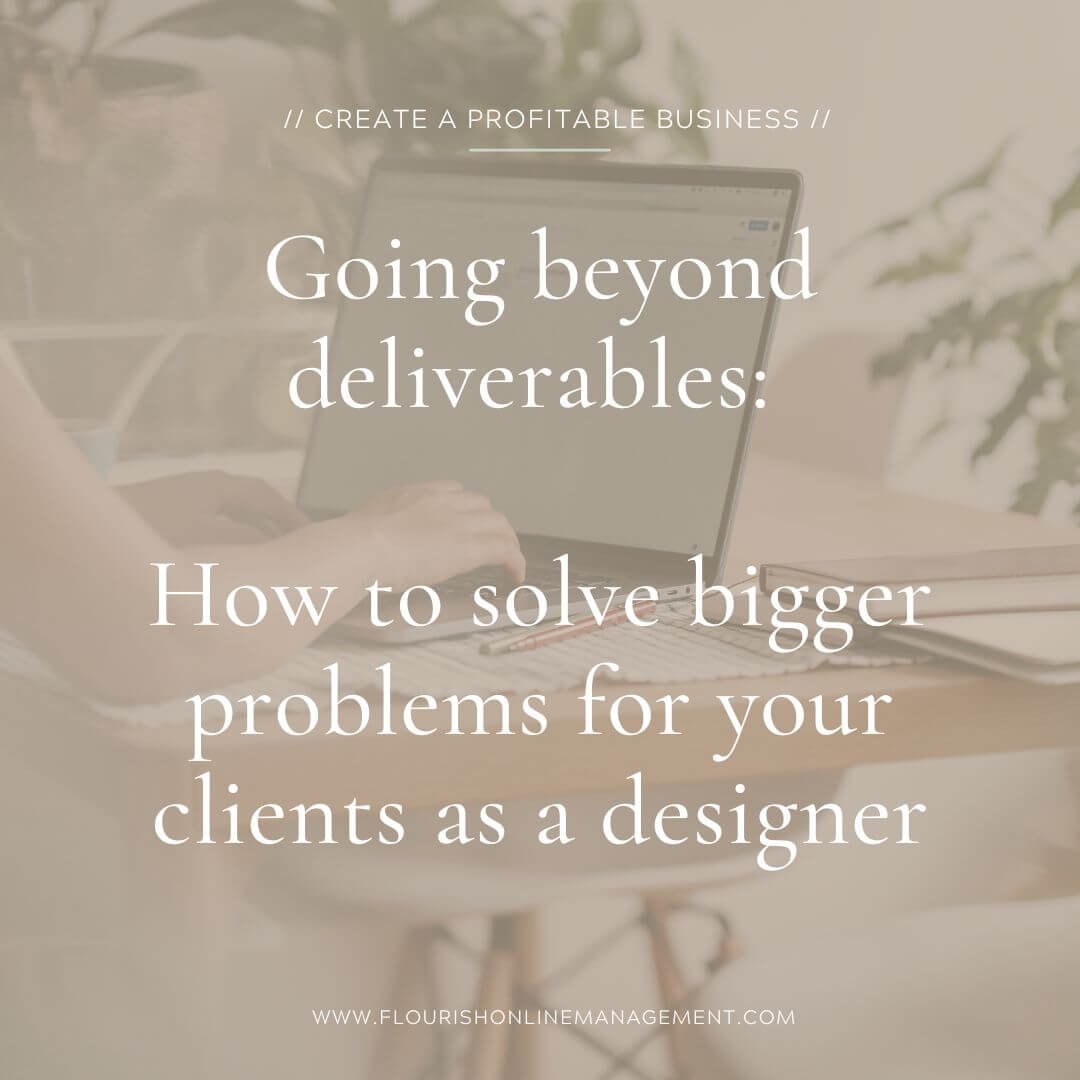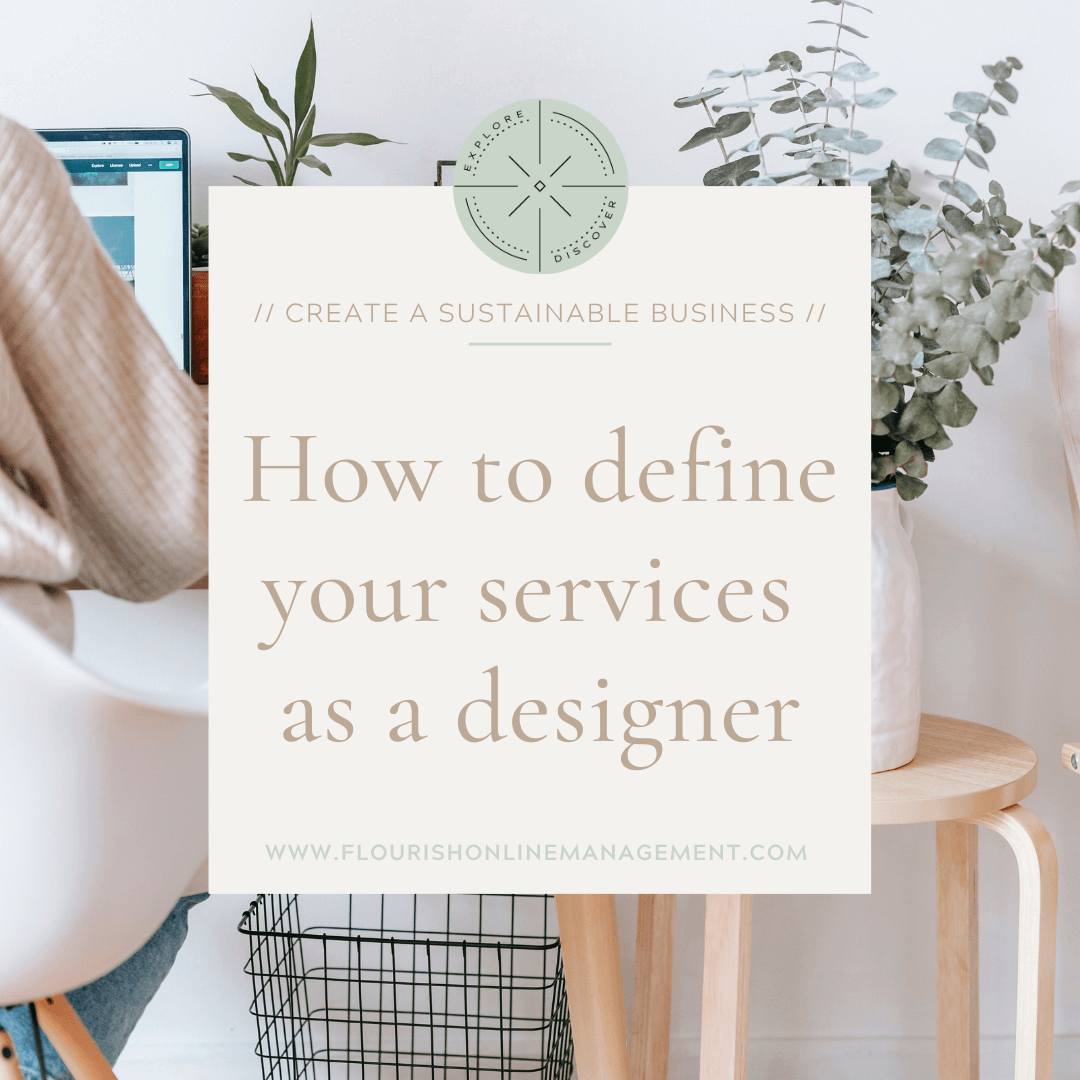5 steps to perform a monthly business review as a designer
As a designer responsible for every aspect of your business, you're no stranger to the juggling act that comes with it. You're not just the creative mind; you're the accountant, the project manager, and the marketing guru.
The weight of running a design studio can sometimes feel overwhelming, but taking a moment each month to reflect can make a world of difference. This is not about grandiose gestures or massive overhauls; it's about the incremental steps that build success. The monthly reflection process can be your secret weapon in achieving financial stability and sustainability.
Don't worry if you don't have the time to do this; you can easily break this up into smaller blocks of time. And if you feel hesitant to start a monthly reflection process because of what it might bring to light, I have a few tips on starting small.
Let's dive in, and one step at a time, build the confidence you need to create the thriving design studio you envision.
In this blog, I will break this monthly business review for designers up into 5 sections:
The importance of a monthly business reflection
Monthly review questions
Track your metrics
Update your financials
Review your goals
Planning for the next month
The importance of a monthly business reflection
So, what is the monthly reflection process, and why is it so important for you? Think of it as a regular check-in with your business. It's a chance to assess where you've been, where you are now, and where you're heading.
By reflecting on your past month, you gain insights that can help you fine-tune your approach. You'll understand what's working well and what needs improvement. This isn't about dwelling on mistakes but embracing the opportunity to learn, adapt, and grow.
Why you might not have added a monthly reflection to the schedule so far
You're not alone if you've never sat down to evaluate your past month and planned for the com; most of my clients never have before working with me. For me, this was a practice I learned as a business analyst and pricing manager, one that has proven worthwhile in my own business time and again.
This is often related to 2 of the 4 most common challenges each design studio faces: Letting client projects take over & not establishing formal processes and boundaries.
Ever heard of Parkinson's Law?
It says, "Work expands to fill the time available for its completion."
In the context of client work, that means if you don't set specific timeframes for your tasks, those projects can quickly consume all of your available time (and then some). It doesn't matter if you're juggling one client or six – without a solid structure and time allocation, client work can become all-consuming. It's like a never-ending marathon, and you're running on empty.
Without efficient workflows and time management, you risk falling into a cycle where you're constantly rushing to meet deadlines, feeling like you're just winging your projects, and never having enough time to work on the business side.
However, time constraints due to not having formal processes or not using time blocks to structure your week are not the only reasons I have seen for designers not to have review processes in place.
Some of the reasons could be:
Lack of Awareness: You might not know the benefits of monthly reviews and how they can help improve your business. If this is you, don't worry about it. They are not teaching you this in design or business school (at least not the one I attended). So unless someone else taught you to do this, there is a small chance you would.
Perceived Complexity: Monthly reviews may seem daunting, especially if you haven't established a clear process for conducting them. You might believe it's too complicated to implement or don't know where to start or what specific steps to follow in a monthly review.
Ineffective Goal Setting: If you've set goals that are vague, unrealistic, or not well-defined, you may not see the value in reviewing them. If this is you, now is the time to set clear goals for next year. Here are a few articles that can help you with this:
But let's go even deeper.
There is a reason besides Parkinson's Law that client work takes over. Most likely, this is a combination of a lack of confidence in yourself as a business owner, a fear of confronting challenges, and a resistance to change.
This might sound painfully familiar, but please don't beat yourself up because of it. You're an amazing designer, and because that is the thing you want to do most of all, that is where you've spent your time and money;
How to become a better designer by learning more about Illustrator,
How to manage your projects better by investing in templates,
How to reach more (and higher paying) clients by investing in a course from a 6-figure designer you admire.
Not business books like Measure What Matters by John Doerr or a business coach.
However, this combination of a lack of confidence in yourself as a business owner, a fear of confronting challenges, and a resistance to change is causing this cycle of letting client work to expand to fill the time available for completion.
And that is what is keeping you stuck.
The fears that might come up when thinking about a monthly reflection process could be;
You lack confidence in analytical skills, particularly when reviewing business metrics and financials. You might feel uncomfortable interpreting data and making strategic decisions based on that and fear making errors or misjudgments.
Fear of Inadequacy: The fear of discovering that your business isn't performing as well as you had hoped can be a confidence-killer. You might worry that facing such information will highlight your inadequacy as a business owner. Adding to the fear of being a failure or a reflection of your skills.
Overwhelm: You might be overwhelmed by the challenges you already face in your business and feel that confronting these issues will be mentally and emotionally taxing. Avoiding monthly reviews can help to temporarily stop you from having to acknowledge even more challenges.
Uncertainty: You may be uncertain about how to address the challenges you uncover during the review. The fear of not knowing how to solve these problems can keep you from the process.
Routine Comfort: Maybe you find comfort in your routine and resist change. You might have established ways of doing business and feel that adding monthly reviews disrupts your familiar pattern as it requires you to allocate time and effort to a new practice.
Maintaining the Status Quo: You might have been managing your business without monthly reviews and may feel that your current approach is sufficient. You may be hesitant to adopt a new practice you're unfamiliar with even though you know your future self would be grateful.
If you want to start a reflection process but keep it small
If you know that your current work schedule is not good for your well-being, your business processes are unsustainable, and your business is not financially stable, but you're hesitant to start with a monthly reflection, you can start small.
You can start with a small review and build your confidence and analytical skills. Or you can start by making small adjustments to your daily or weekly routine and gradually incorporate monthly reviews.
Could you take 10 minutes at the end of each week to ask the reflection questions outlined in Step 1?
Could you take 10 minutes on Monday to determine the 3 tasks you want to do for this business this week? You can start by adding a 30-minute block halfway through the week where you need to complete all 3. Step-by-step, this block can be extended, or you can add more than 1 block weekly.
The key here will be to be patient with yourself and reframe your perspective about the process and your skills. The challenges you have been facing can be opportunities for growth and improvement. Keep reminding yourself of the long-term benefits, such as improved confidence in decision-making, and start to trust that you can grow your design studio and make it sustainable.
And even if you make the 'wrong' decision, failure is a natural part of business growth. With every challenge you confront, you will not only become a more resilient and skilled business owner; this is the only way you will find what will work for you.
Monthly business reflection step 1: Monthly reflection questions
Now that you understand the significance of the monthly review process let's dive into the heart of it – the monthly review questions that can help you reflect on the past month.
You can use the monthly reflection journal prompts below to evaluate the previous month. These questions aren't meant to overwhelm; they're designed to guide your introspection. We tend to focus on what's left to do and how far we still have to go without recognising how far we've already come (something I struggle with personally), but I know when I write these things down, they serve as great reminders on tough days.
What projects did I complete this month, and what did I learn from them? Reflect on the design projects you've tackled. What went well? What could have been done differently? Each project is a learning opportunity; these insights will guide your future work.
What challenges did I face, and how did I overcome them? Owning a design studio inevitably comes with hurdles. Take a moment to acknowledge these challenges and, more importantly, how you navigated through them. Your resilience is worth celebrating.
Did I meet my creative or professional goals, and if not, what can I do differently next month? It's crucial to hold yourself accountable. Did you achieve what you set out to do? If not, don't be discouraged. This is a chance to adjust your goals and strategies for the next month.
How did I manage my time and resources? Time and resources are precious commodities. Assess how effectively you allocated them. Are there areas where you can be more efficient?
Did I provide exceptional value to my clients or customers? Your clients are the lifeblood of your business. Consider the satisfaction and feedback your clients give. If there are areas where you can enhance their experience, jot them down.
What aspects of my design process can be refined or evolved? Reflect on your processes. Is there room for improvement or innovation?
If there is anything you can or should adjust moving forward, be specific and plan a timeline to implement these changes.
Monthly business reflection step 2: Track your metrics
Keeping an eye on the numbers might not be your favourite task. However, it's an essential one. Tracking your metrics is like having a dashboard for your business. It helps you make informed decisions, identify trends, and ensure financial stability. When I talk about metrics, I'm referring to the measurable aspects of your business. These could include:
Client focussed metrics:
Lead Time: How long does it take for a lead to convert? And are there opportunities to speed up the decision-making process for clients?
Project Completion Time: How long does it take to finish a project, and are there opportunities to streamline your workflow?
Client Satisfaction: What are your clients saying about your work? Their feedback is a valuable metric.
Marketing Efforts: What's the return on your marketing investments? If you're spending time or money on marketing, assessing its effect is important. Where in the client journey are your potential clients getting stuck?
Attention phase: The customer's journey starts when a potential client comes in contact with your business for the first time, which is why it is called the brand awareness or the attention phase. This happens at all the places where a potential client might first discover you:
Social media channels: Facebook, Instagram, Linkedin, YouTube etc
Search engines like Google or Pinterest
Guest on a podcast
Interest phase: This potential client found your content appealing and wants to learn more. They might start following you on social media, subscribe to your newsletter, or download a freebie to gain deeper insights into your offerings and see if they align with their needs.
Desire phase: They've familiarised themselves with your business and are genuinely interested in what you have to offer. This is where the transition from marketing to sales occurs.
Booking a consultation call
Turning a consultation call into a paid client.
Once you know where they are stuck, that is the phase where you want to focus your efforts and understand why this is happening.
Website Traffic and Engagement. Your online presence is a key asset. You'll need to monitor your website traffic, what pages your visitors view, how visitors engage with your content, where they drop off, and how they found your website. If you notice significant variations, ask yourself why. Did you make any changes? Did you write more or fewer blog posts, update your SEO, or promote more on social media? Keep track of these changes as they can impact shifts in growth or decline.
Email marketing: You've heard it before; you don't own social media, and you should not put all your eggs in one basket, which is where email marketing comes in.
For your weekly newsletter, you want to monitor subscriber growth, open rate, and click rate. If you see a decline in open rates, review your subject lines. Are they different from your usual ones? Do you need to clean up your email list? Or try different calls to actions?
You want to monitor sends, open rate, and click rate for your welcome sequence.
For landing pages, it is important to know views, subscriber growth, and conversion rate. Aim for a minimum conversion rate of 20%, but ideally, strive for more, adjusting until you achieve a 50% conversion. When making changes, focus on one element at a time to track its impact effectively.
Tracking these metrics doesn't have to be complicated. You don't need fancy software or an accounting degree. Simple spreadsheets or even a pen and paper can do the job. The key is consistency. Regularly update your metrics; over time, you'll notice patterns and opportunities for improvement.
Remember, it's not just about the numbers; it's about the insights they provide and the confidence they give you as a business owner.
Monthly business reflection step 3: Update your financials
Managing the financial side of your design business may not be the most glamorous part of the job, but it's a critical one. It's where the rubber meets the road. When it comes to updating your financials, think of it as keeping a well-organized ledger. You want to know where your money is coming from and where it's going. Here are a few steps to help you with this process:
Keep a record: Maintain a detailed record of your income and expenses. This can be as simple as a spreadsheet or dedicated accounting software, depending on what suits you best or what you require for tax purposes. Track every payment received and every penny spent. If you use ClickUp, I've written an article on tracking your revenue in that system. You can find it here or watch the loom video below.
Categorise expenses: Categorise your expenses to understand where your money is going. Common categories may include software, marketing, coaching, and external contractors. Don't overlook processing fees from payment processors like PayPal.
Reconcile invoices: Ensure all your invoices are paid on time. Follow up with clients or customers if payments are delayed.
Set aside for taxes: Don't forget about taxes. It's a good practice to set aside a portion of your earnings for tax purposes. Consult with a tax professional to determine the right amount.
Assess your financial health: Regularly review your financial statements. Are you making aCanofitu able to keep paying yourself the same amount for the coming 3 months even if no new clients come in? Do you have money in the business to invest?
Adjust your budget: Look ahead to the coming month and assess your revenue outlook. Look at already signed contracts and anticipate how much revenue will flow in. This is especially crucial for long-term projects with split payments, where some revenue may arrive in different months than when the work is completed. Ensure that the projected revenue aligns with your budget. If there's a deficit, evaluate the number of leads and your lead time (I mentioned this in step 2) and identify which services fit them best. Can you proactively approach these leads for conversion? If you don't have a revenue budget for your design studio, I recommend reading How to create a revenue budget.
Remember, managing your finances isn't about being a financial expert; it's about being in control. By staying on top of your financials, you gain the confidence and peace of mind that your business is on solid ground.
I understand this can be daunting, but take it one step at a time. The more you engage with your financials, the more confident you'll become.
Monthly business reflection step 4: Review your goals
Before reviewing your goals, there's something crucial to address. Before setting any goals, you need absolute clarity about where you want to go. So, before you evaluate your goals, I encourage you to ask yourself if your current way of working is genuinely propelling you closer to your business and life(style) goals.
Now, let's take a moment to revisit your goals:
Start with the Past:
First, look at the goals you set for the past month. Examine the top three tasks you set for yourself in the previous month. Did you achieve them? If so, celebrate your accomplishments.
If not, don't be disheartened; sometimes, circumstances change, and that's okay. But you'll need to consider whether you need to reschedule some of these tasks for the coming month.
Reflect on the reasons behind not achieving your goals or finishing your tasks. Is it because you first need to complete something else, like a new service or system, or are you missing the necessary knowledge? Be honest with yourself if it was a lack of effort. In such cases, ask whether you are truly committed to your goals or if you are trying to pursue something because it seems to work for others, even if it doesn't align with your strengths and preferences.
Look at the bigger picture:
Assess your progress with the goals for this quarter. Are you on track, or does something need to change?
If you aim to launch a new service in the next quarter and plan to grow your audience, consider whether your audience growth is proceeding as anticipated. Do you need to adapt your strategy or invest more effort into achieving this?
If you intend to implement a CRM system like Dubsado or Honeybook in the next quarter but haven't started, identify what's holding you back. Is it a lack of knowledge on where to begin, a lack of established workflows, or not dedicating sufficient time to work on your business?
Break it down and prioritise:
Divide your larger goals into smaller, manageable tasks. This makes them less intimidating and more achievable. This way, you'll also be able to identify the top three goals for each month and further divide them into individual tasks, making it clear what you should work on daily or weekly to reach those goals.
If you don't have clear goals be sure to check out the articles I mentioned earlier in the blog. But if you feel your goals seem unreachable this article might be worth a read. When you don't know what to prioritise this article about why I stopped using to-do lists will help.
Reflect and adapt:
As you review your goals, remember that flexibility is your friend. Life happens, and your goals may need to adapt to changing circumstances.
The goal-setting process isn't about creating an unyielding plan, it's about guiding your journey. It's normal for your goals to change or shift, and it's a sign of growth and adaptability as a business owner. I even changed my yearly planning process to account for flexibility. You can read more about this in An alternative approach to a year-long action plan for designers
Monthly business reflection step 5: Planning for the next month
Now that you've reviewed your past month and assessed your goals, it's time to look ahead. Planning for the next month is about intentionally allocating your time and resources.
Start by identifying the key tasks and projects you want to tackle in the coming month. What needs your immediate attention based on your yearly action plan and the progress that you've made so far, and what can wait?
Reflect if these goals still align with your vision.
Do they make sense for your current business trajectory?
Is there anything from the past month that remains unfinished and needs to be carried over?
Once you have these answers, you chart out your weekly top three tasks. If necessary, break them down into actionable steps.
Allocate your time
Once you've identified your priorities, review your time block schedule for the coming month and make adjustments if necessary. Then allocate time for client work, estimate time needed for implementing your goals, and add due dates that coincide with your business focus time blocks (not working with time blocks yet, consider reading this article, (it will be a game-changer). Don't forget to factor in time for personal life and self-care. Maintaining a healthy work-life balance is crucial for long-term sustainability.
This process is quite similar to the one I use to plan my weeks, you can read this here.
And there you have it.
It's important to remember that building a successful design studio isn't about the overnight transformations social media has us thinking as normal. It's about consistent, deliberate steps in the right direction.
You are responsible for every aspect of your business, and to get where you are now, you have already shown the determination and resilience it takes to succeed. By embracing a monthly review process, you're taking one more step in the right direction.
The insights you gain from reviewing your past month, tracking your metrics, updating your financials, and reflecting on your goals are like building blocks. They empower you to shape your business and your future.
It's not about perfection, but progress (just as much a reminder for you as it is for me). Your journey will have ups and downs, and your confidence will get knocked down, but that's all part of the process. The key is to keep moving forward, one step at a time.
Financial stability and sustainability in terms of time, mental capacity, and physical well-being are within your reach. The fact that you're reading this, seeking knowledge and guidance, is a testament to your commitment to your success.
You've got this!
Stephanie
If you thought this post you might also like:
























































